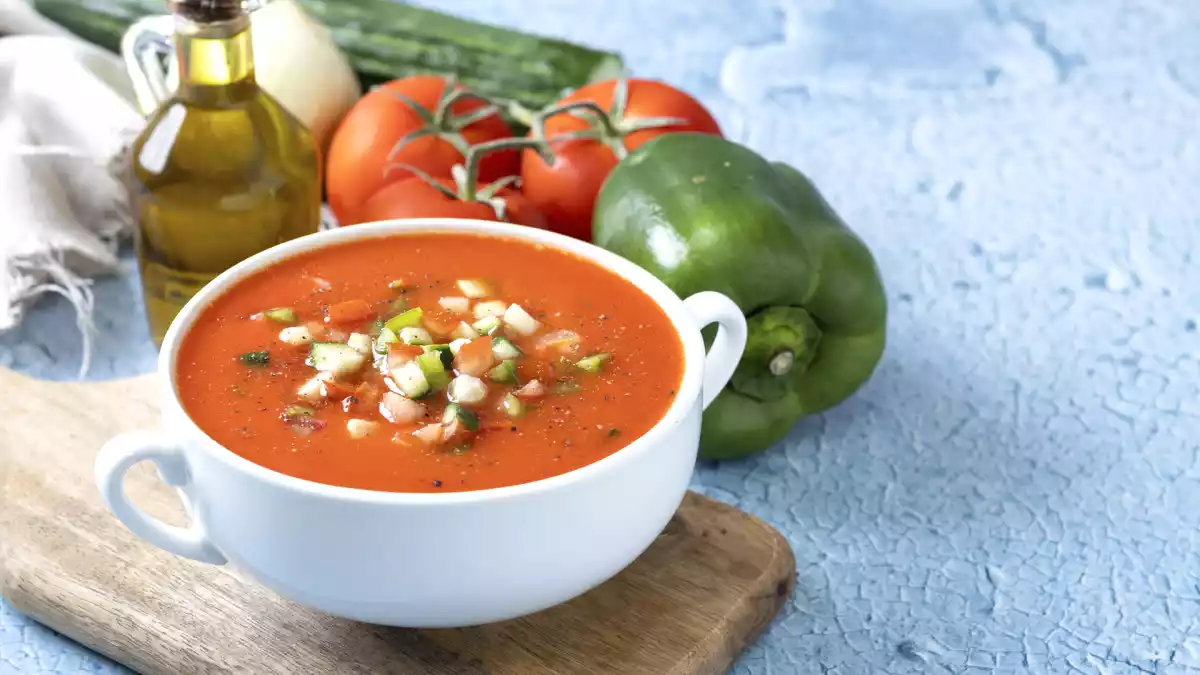Five keys to a really good Andalusian gazpacho

There are cold soups... and then there is the Andalusian gazpacho. Red, aromatic, full of summer vegetables and family memories, it is much more than a recipe: it is a way to survive the heat, a gesture learned in the kitchen from our mothers or grandmothers, a liquid texture that refreshes body and soul. In my house, gazpacho smells like Andalusia.
But as with everything apparently simple, there is a distance between the right gazpacho and the one that really excites. It is not enough to grind and cool: you have to know how to look at the details. These are five keys that can make the difference between a gazpacho that delivers... and one that becomes the summer dish you always want to come back to.
It all starts with a good tomato
There are no shortcuts here: the tomato is not just an ingredient, it is the soul of gazpacho. And for that soul to express itself in full force, it must be just right: ripe, sweet and full-bodied. Pear tomatoes are especially recommended for their dense flesh, thin skin and balanced flavor, but vine tomatoes, bell pepper tomatoes or large "gazpachero" tomatoes also work well.
In addition to the type, the degree of ripeness is also important. Choosing a green or floury tomato is getting off on the wrong foot. And if you are looking for a fine texture, as a good gazpacho should have, it is advisable to peel them before crushing or, at least, to strain the mixture through a fine sieve once it is ready.
2. Rest should not be optional
Most homemade gazpachos are impatient. Once everything is crushed, it is served instantly, without giving time for the ingredients to really "get to know each other". But if there is a gesture that elevates the result, it is to let it rest.
The ideal is to do it calmly: chop the ingredients, mix them with the oil, vinegar and salt, cover the bowl and keep it in the refrigerator overnight. The next day, when blended, the flavors will be settled and the gazpacho will be fresher and tastier. You can also blend it directly and leave it ready to cool, but the flavor will never be as rounded as in the patient version.
3. You'll need a good olive oil
Few things can round off a gazpacho like a good extra virgin olive oil. Its flavor, if it is smooth and balanced, accompanies it without imposing itself. It also has a technical function: it helps to emulsify. If it is incorporated in a fine trickle while whisking, the result is a silky gazpacho, with body but without excessive density.
The recommendation? Use a mild-tasting extra virgin olive oil so as not to mask the flavor of the vegetables. Nothing too strong: gazpacho should taste like summer, not like an oil mill.
4. Texture: what distinguishes the homemade from the outstanding.
Mashing is not enough. A good gazpacho must glide over the palate like a smooth, uniform and silky cold cream. For that, a powerful blender is key. But even with modest appliances, there are ways to improve the result: adding the oil while whisking helps create that creamy emulsion, and straining it at the end, although laborious, works miracles.
If you are not in a hurry and care about detail, this step is worth gold.
5. And don't repeat: the art of smoothing without losing flavor
Two key ingredients come into play here that, if mishandled, can ruin digestion: cucumber and garlic. The first, although essential, can be bitter or heavy if used with skin or unpeeled. The solution? Peel it and remove the seeds, or lightly salt it, let it sit for a few minutes and then rinse it. Both methods help to soften its flavor without detracting from its freshness, making it blend harmoniously into the whole.
Garlic, on the other hand, requires care and measure. A small clove is enough for a liter, but always without its germ: that greenish sprout that causes so many tastes. More precautions? Blanch it for a few seconds in boiling water. Its flavor is softened, but is still present, as a background note that does not bother.
How about you?
Tell us how you prepare it, what trick you never forget or what mistake you learned to avoid. Are you one of those who serve it almost liquid or do you prefer it to have body? Do you drink it in a glass, do you take it with a spoon, do you accompany it with something? Are you faithful to the classic version or do you prefer the more innovative and creative versions?
Each house has its own way of making it, its own well-kept secret, its own inherited trick. Do you dare to tell us yours?
 Patricia González
Patricia González
Comments